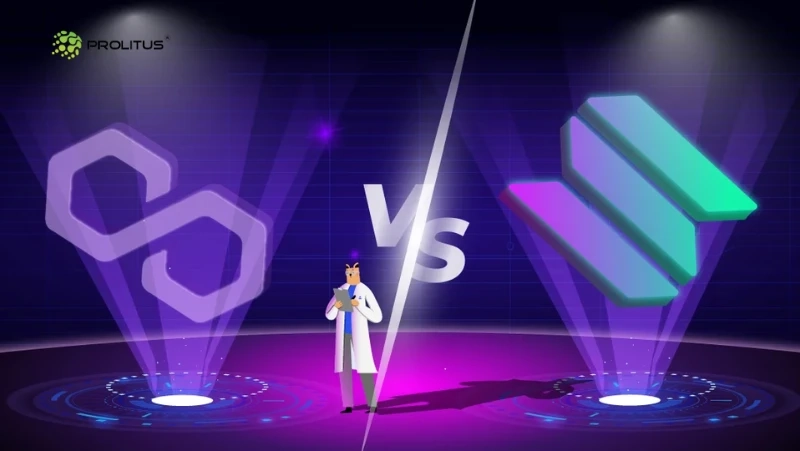Introduction
Blockchain technology has witnessed tremendous growth in recent years, revolutionizing various industries and offering new possibilities for developers and businesses. However, choosing the right blockchain platform is crucial for harnessing its full potential. In this article, we will compare two prominent blockchain platforms, Polygon and Solana, exploring their features, performance, security, developer experience, tokenomics, and adoption.
Understanding Polygon
Polygon, formerly known as Matic Network, has gained significant attention for its scalability solutions and Layer 2 protocols. With interoperability and compatibility with Ethereum, Polygon enables developers to create high-performance decentralized applications (dApps) while benefiting from lower transaction fees and faster confirmations. Notable projects such as Aavegotchi, SushiSwap, and Decentraland have been built on Polygon, demonstrating its practical use cases.
Exploring Solana
Solana stands out for its high throughput and low latency, offering an impressive transaction processing capacity. Its unique consensus mechanism and architecture contribute to its scalability, making it capable of handling thousands of transactions per second. With a vibrant ecosystem and strong developer support, Solana has attracted notable projects like Serum, Audius, and Mango Markets, showcasing its potential in diverse industries.
Performance and Scalability
In terms of scalability, Polygon and Solana offer distinct approaches. Polygon's Layer 2 solutions provide scalability by processing transactions off-chain and settling them on the Ethereum mainnet. This allows Polygon to benefit from Ethereum's security while significantly increasing transaction throughput. On the other hand, Solana's architecture and consensus mechanism enable it to handle high transaction volumes with fast confirmations, making it ideal for applications that require real-time data processing.
Security and Decentralization
Both Polygon and Solana prioritize security. Polygon utilizes Ethereum's battle-tested security measures while providing additional layers of security for its Layer 2 solutions. Solana, with its proof-of-history mechanism and Byzantine fault tolerance consensus, offers robust security against attacks. Decentralization is a key aspect as well, with Polygon and Solana implementing governance models that involve token holders in decision-making processes.
Developer Experience and Ecosystem
Developers' experience and available resources play a vital role in platform adoption. Polygon provides extensive development tools, libraries, and documentation, ensuring a smooth development process for Ethereum developers. Solana offers a growing ecosystem with comprehensive developer support, including Solana's web3.js library and Solana Studio IDE. Both platforms support popular smart contract languages and frameworks, enabling developers to leverage existing knowledge.
Tokenomics and Governance
Polygon and Solana have distinct token models and economic incentives. Polygon's MATIC token serves as the primary currency for transactions and security on the network. Token holders can participate in staking and earn rewards while also influencing governance decisions. Solana's SOL token has utility within the ecosystem and allows token holders to participate in staking and earn rewards. Its governance model empowers token holders to propose and vote on protocol upgrades.
Adoption and Partnerships
Both Polygon and Solana have witnessed significant adoption and established partnerships. Polygon has garnered support from prominent projects like Aave, Curve Finance, and Chainlink, expanding its reach and utility. Solana has formed strategic partnerships with FTX, Serum, and Terra, among others, solidifying its position in the DeFi and NFT space. These partnerships contribute to the growth of each platform's ecosystem and validate their real-world use cases.
Conclusion
Choosing the right blockchain platform depends on various factors, including scalability requirements, developer experience, and ecosystem support. Polygon and Solana offer compelling features, performance, and security, catering to different use cases and industries. Developers and businesses should carefully assess their needs and consider the strengths and weaknesses of each platform to make an informed decision. As the blockchain landscape continues to evolve, further exploration and research are essential to leverage the full potential of these promising blockchain platforms.


